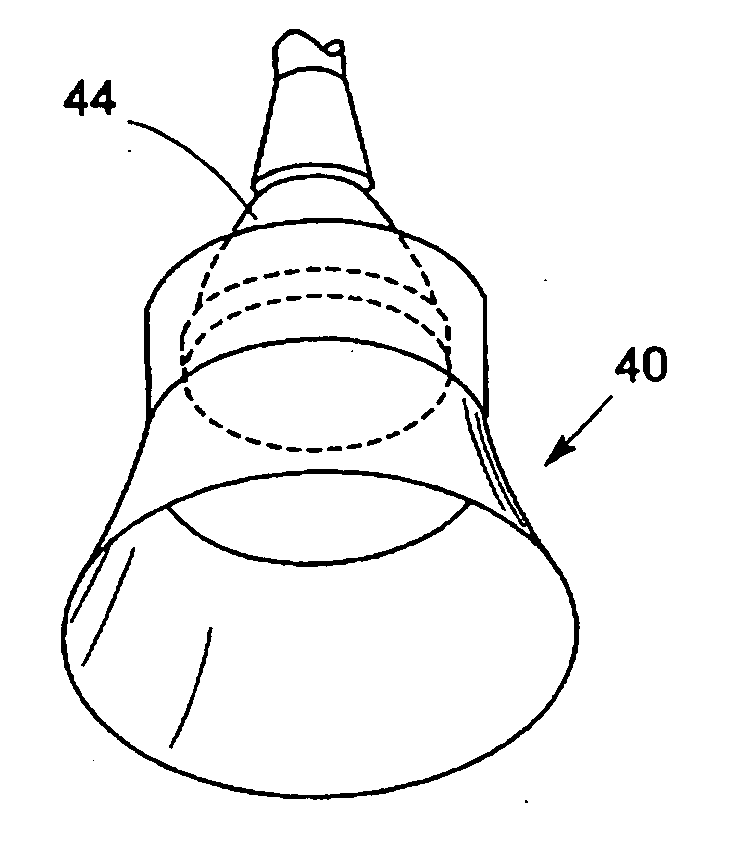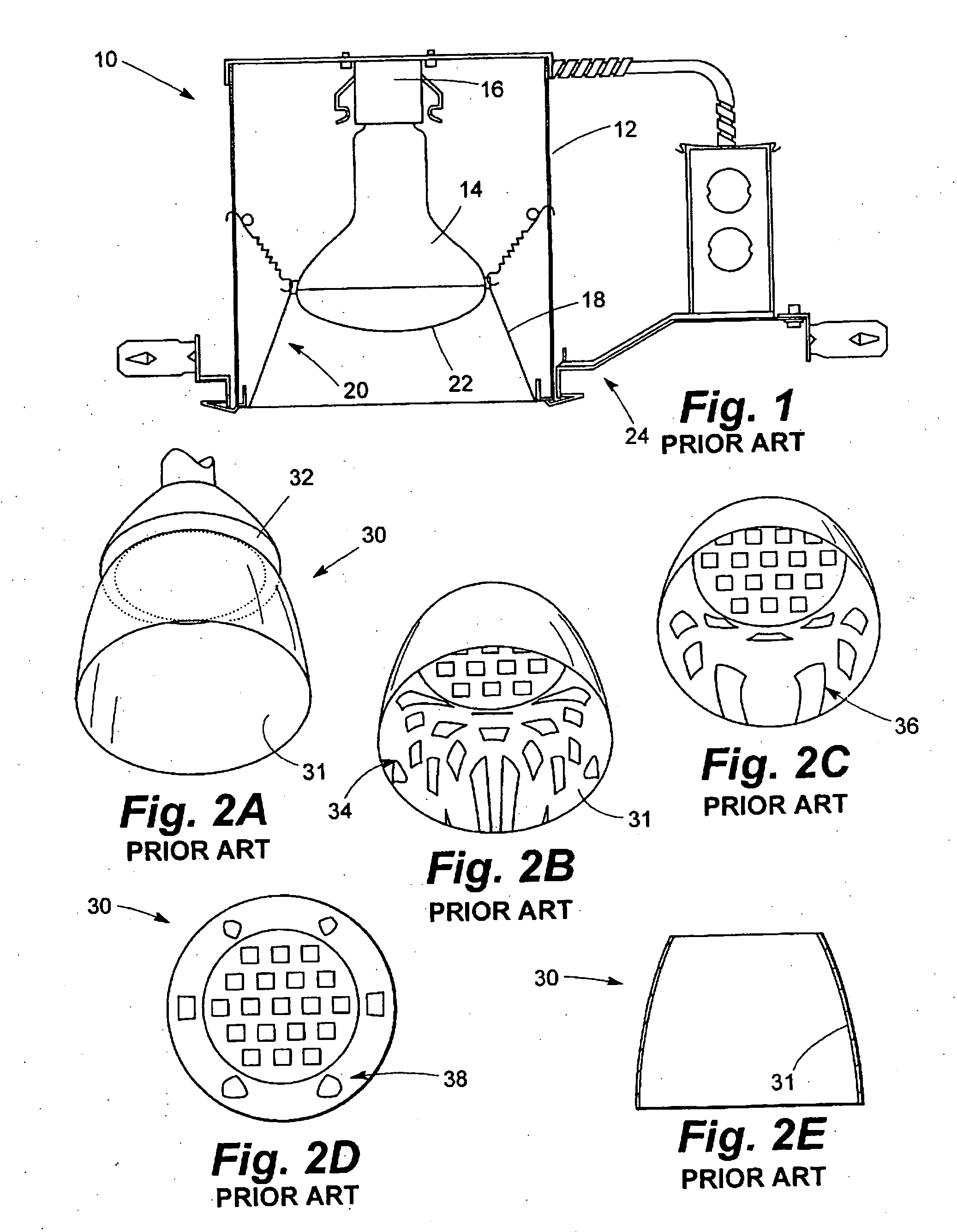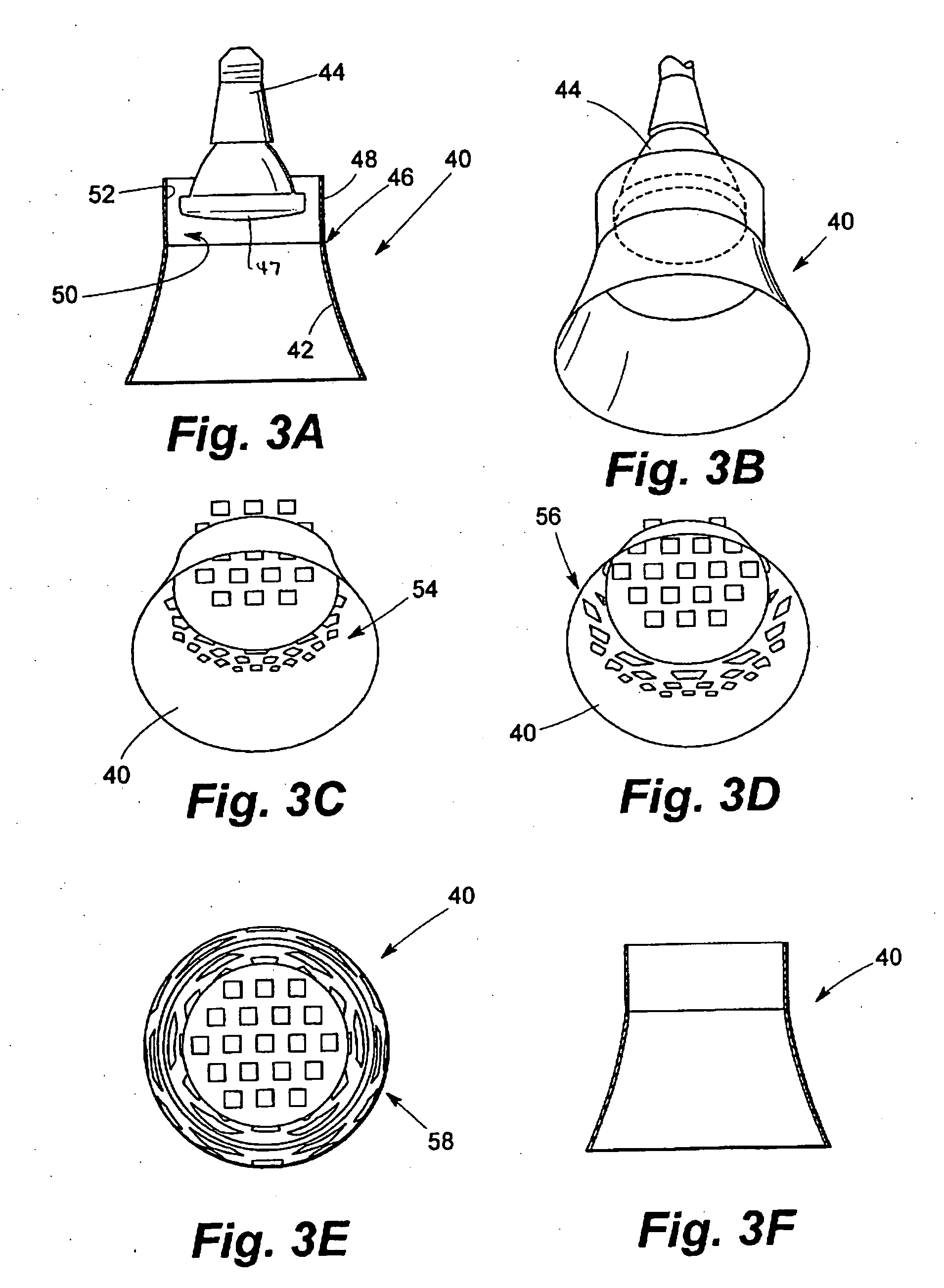Reflector assemblies for luminaires
a technology of reflectors and luminaires, which is applied in the direction of semiconductor devices for light sources, fixed installations, lighting and heating apparatus, etc., can solve the problems of preventing the desired mixing of light in the far field, affecting the quality of light, so as to reduce or eliminate striations and improve quality.
- Summary
- Abstract
- Description
- Claims
- Application Information
AI Technical Summary
Benefits of technology
Problems solved by technology
Method used
Image
Examples
Embodiment Construction
[0039] Referring now to the drawings and particularly to FIG. 1, a prior art downlighting luminaire 10 includes a housing 12 within which an R30 lamp 14 is mounted by a socket 16. A reflector 18 having reflective surfaces 20 is formed as a frustum of a cone. Lower portions of the lamp 14 extend below the top of the reflector and into the space within the reflector 18 through open upper portions of reflector 18. Lens face 22 of the lamp 14, thus, lies substantially within the space defined by the reflector 18 and is below the upper edges of the reflector 18. The downlighting luminaire 10 is usually mounted in a recessed location within a ceiling or the like (not shown) by a conventional mounting frame shown generally at 24. The luminaire 10 is seen to utilize a conically shaped reflector 18 in combination with an R lamp. Because the R lamp has a diffuse coating on exit face 22, the light pattern is generally uniform in the near field and does not give rise to the non-uniformities inh...
PUM
 Login to View More
Login to View More Abstract
Description
Claims
Application Information
 Login to View More
Login to View More - R&D
- Intellectual Property
- Life Sciences
- Materials
- Tech Scout
- Unparalleled Data Quality
- Higher Quality Content
- 60% Fewer Hallucinations
Browse by: Latest US Patents, China's latest patents, Technical Efficacy Thesaurus, Application Domain, Technology Topic, Popular Technical Reports.
© 2025 PatSnap. All rights reserved.Legal|Privacy policy|Modern Slavery Act Transparency Statement|Sitemap|About US| Contact US: help@patsnap.com



